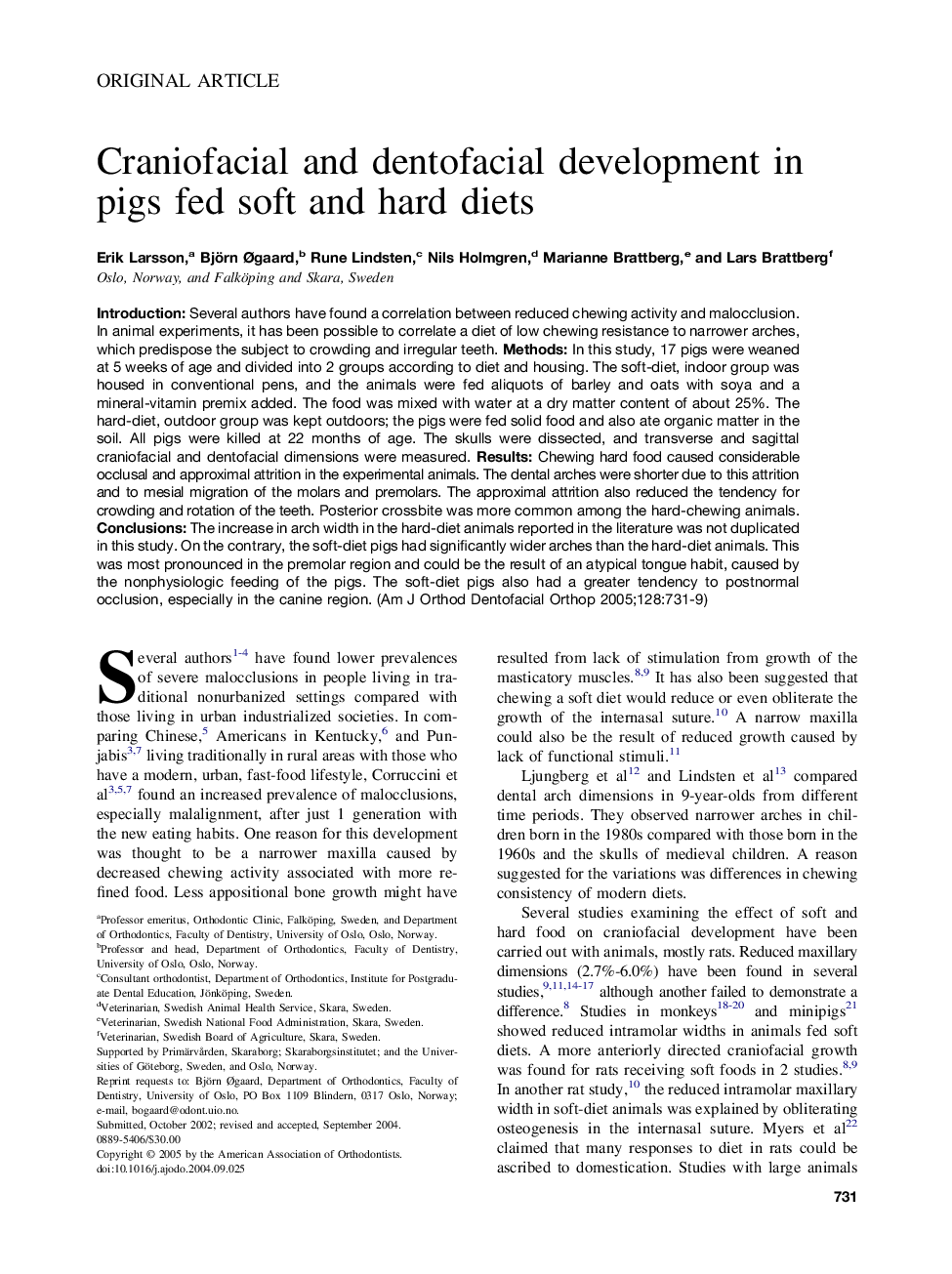| Article ID | Journal | Published Year | Pages | File Type |
|---|---|---|---|---|
| 9992500 | American Journal of Orthodontics and Dentofacial Orthopedics | 2005 | 9 Pages |
Abstract
Introduction: Several authors have found a correlation between reduced chewing activity and malocclusion. In animal experiments, it has been possible to correlate a diet of low chewing resistance to narrower arches, which predispose the subject to crowding and irregular teeth. Methods: In this study, 17 pigs were weaned at 5 weeks of age and divided into 2 groups according to diet and housing. The soft-diet, indoor group was housed in conventional pens, and the animals were fed aliquots of barley and oats with soya and a mineral-vitamin premix added. The food was mixed with water at a dry matter content of about 25%. The hard-diet, outdoor group was kept outdoors; the pigs were fed solid food and also ate organic matter in the soil. All pigs were killed at 22 months of age. The skulls were dissected, and transverse and sagittal craniofacial and dentofacial dimensions were measured. Results: Chewing hard food caused considerable occlusal and approximal attrition in the experimental animals. The dental arches were shorter due to this attrition and to mesial migration of the molars and premolars. The approximal attrition also reduced the tendency for crowding and rotation of the teeth. Posterior crossbite was more common among the hard-chewing animals. Conclusions: The increase in arch width in the hard-diet animals reported in the literature was not duplicated in this study. On the contrary, the soft-diet pigs had significantly wider arches than the hard-diet animals. This was most pronounced in the premolar region and could be the result of an atypical tongue habit, caused by the nonphysiologic feeding of the pigs. The soft-diet pigs also had a greater tendency to postnormal occlusion, especially in the canine region.
Related Topics
Health Sciences
Medicine and Dentistry
Dentistry, Oral Surgery and Medicine
Authors
Erik Larsson, Björn Ãgaard, Rune Lindsten, Nils Holmgren, Marianne Brattberg, Lars Brattberg,
